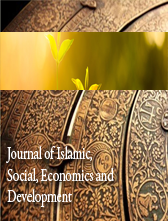INVESTIGATING THE RELATIONSHIP BETWEEN MONEY DEMAND AND FINANCIAL INNOVATION: EVIDENCE FROM SYSTEM GMM
Abstract
We seek to partially bridge the gap in the empirical literature by providing empirical evidence relating to the effect of financial innovations on money demand using panel data analysis. The demand for money is a very important for the conduct of monetary policy and measurement of the effectiveness of monetary policy. This study attempts to investigate if financial innovations has impacted the demand for money using a system (the original equation and the transformed one) GMM method. In this paper, money demand dynamics are examined empirically by using the Blundell–Bond estimator which reinforces Arellano–Bond by making an additional assumption that first differences of instrument variables are uncorrelated with the fixed effects. It makes it possible to introduce more instruments that improve the efficiency considerably. This estimator is an extension of the Arellano-Bond model. Arellano-Bond models use past values and different transformations of past values of the potentially problematic independent variable as instruments together with other instrumental variables. We estimate the demand for money (M2) for a panel of 17 countries from 2006 to 2015. The results indicate that financial instruments (proxied by credit transfers, direct debits and cheques) have positive yet small impacts on the demand for real money.













